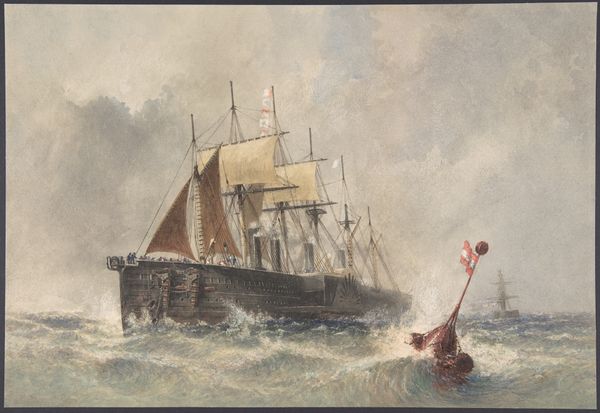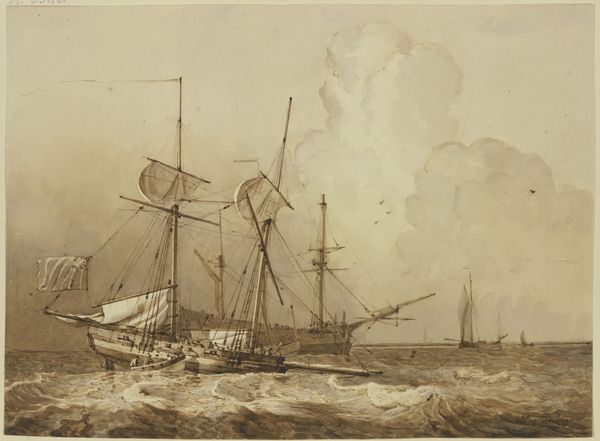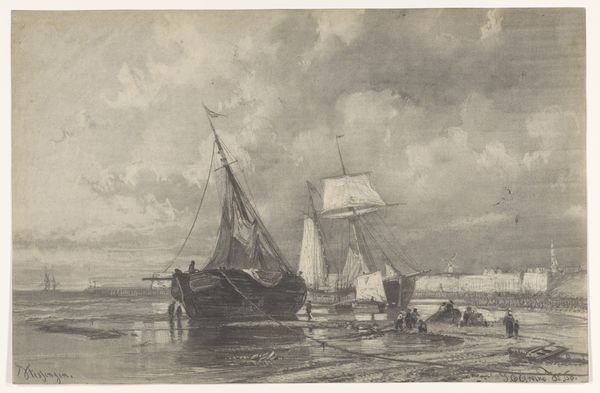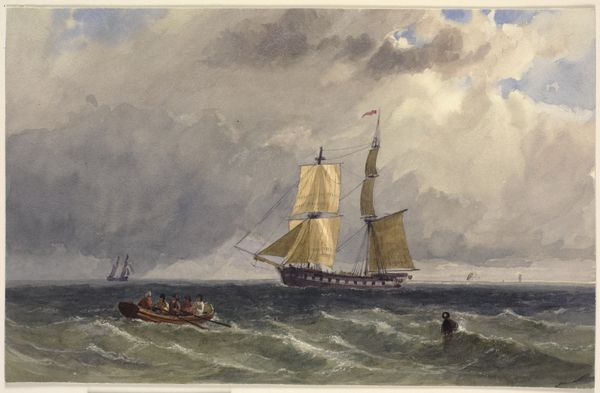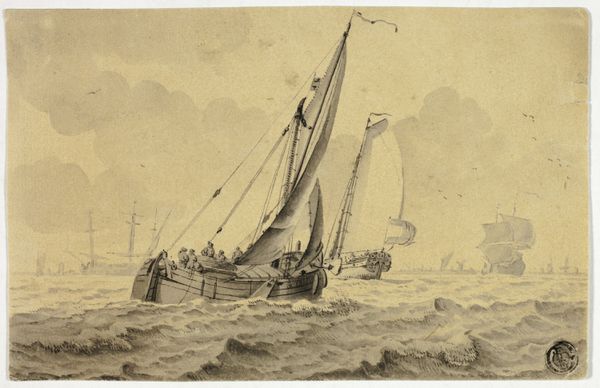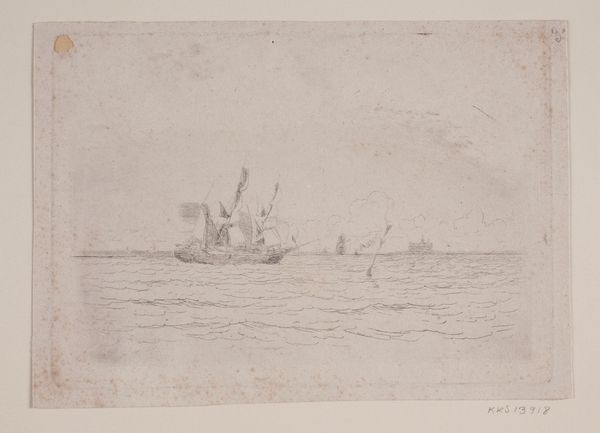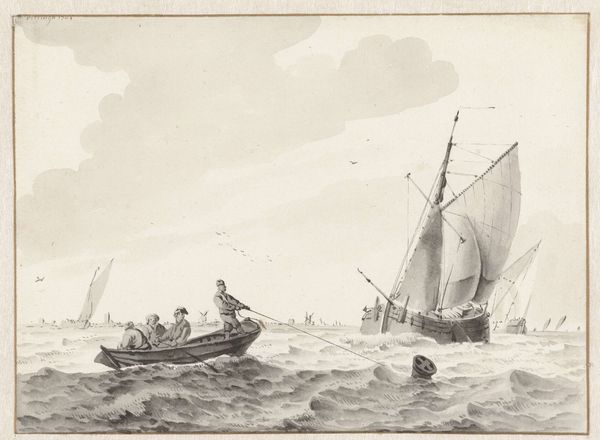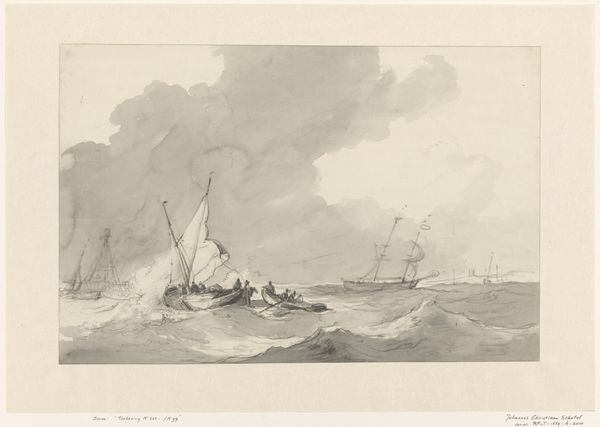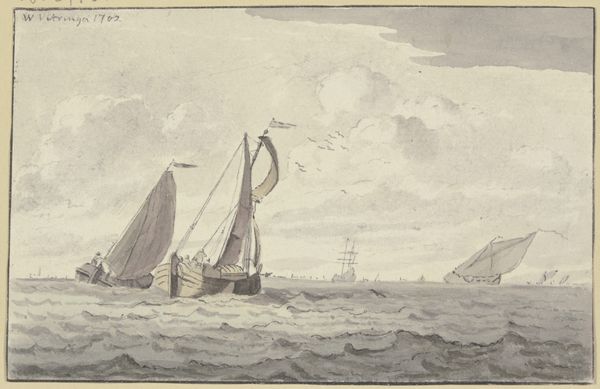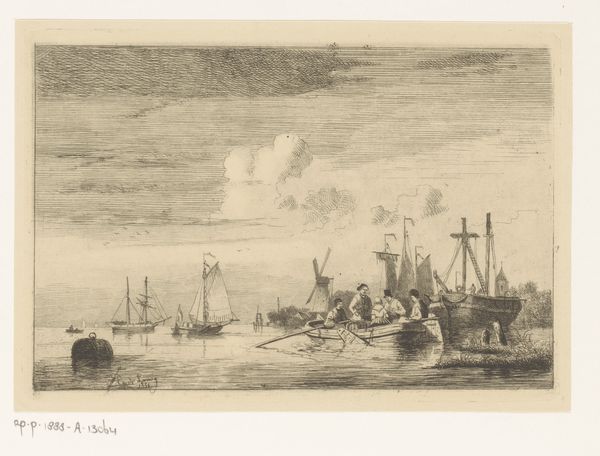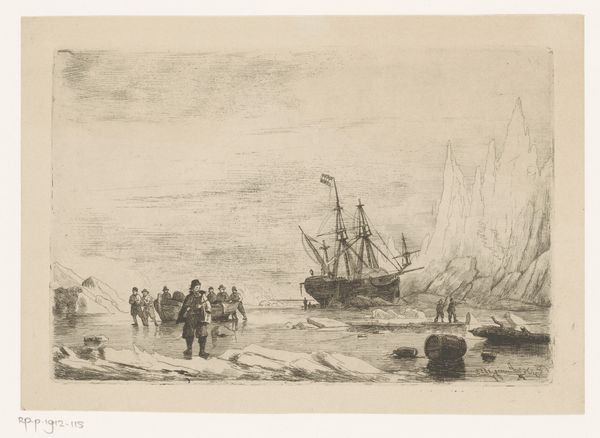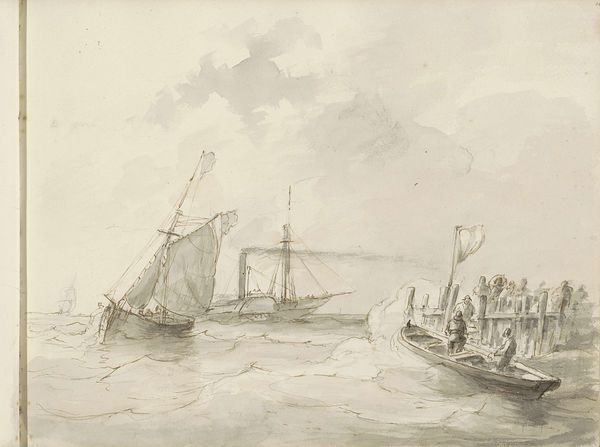
The Great Eastern Under Weigh, July 23rd, 1865: Escort and other Ships, H.M.S. Terrible, H.M.S. Sphinx, The Hawk and Revised: The Caroline 1865 - 1866
0:00
0:00
drawing, print, watercolor
#
drawing
#
ink painting
#
ship
# print
#
landscape
#
watercolor
#
watercolour illustration
#
genre-painting
#
watercolor
Dimensions: Sheet: 7 1/4 × 12 1/2 in. (18.4 × 31.7 cm)
Copyright: Public Domain
Curator: Robert Charles Dudley created this watercolor and ink drawing entitled, "The Great Eastern Under Weigh, July 23rd, 1865: Escort and other Ships, H.M.S. Terrible, H.M.S. Sphinx, The Hawk and Revised: The Caroline" sometime between 1865 and 1866. Editor: It's got a wistful feeling to it, don't you think? The soft palette against the choppy seas...a fleeting moment caught with delicacy. I almost feel like I'm on one of those ships, experiencing that grand departure. Curator: It's quite striking, particularly when you consider the subject—the Great Eastern, a marvel of Victorian engineering designed to lay transatlantic telegraph cables. We are looking at it under way with escort ships after it was refitted. Dudley, trained as a marine engineer himself, was fascinated by maritime technology and regularly documented the ship's voyages. Editor: Engineering or not, the water steals the show for me! See how it's rendered, those swirling yellows and blues? It's so alive, almost as if the ocean itself is a character in the scene. The way it almost obscures those tiny figures of people is interesting. Curator: Yes, the texture is intriguing! What's captivating is the tension Dudley creates between the industrial prowess of the Great Eastern and the uncontrollable power of nature. Consider the Victorian era's obsession with progress and domination—and how this work visually encapsulates their complex relationship to their environment. Editor: Maybe! I keep seeing this melancholy—all the smokestacks fading into a grey sky. Like the end of something, instead of the beginning. Perhaps the people on deck, barely visible in the painting, already understood the weight of all that supposed "progress"? Curator: Well, these vessels needed manpower—consider the sheer number of labourers required to operate a ship like the Great Eastern, from stokers feeding the furnaces to sailors manning the rigging. That watercolor you see belies an enormous human infrastructure that quite literally fuelled its movement across the seas. Editor: It still feels sad to me—and honestly, even a little spooky. I think the lack of detail helps with that. Whatever one calls "progress" seems so small when swallowed by the sea! I love a scene that hints at bigger stories beneath the surface. Curator: Agreed. And thinking about the artwork's materiality itself is revealing too, the way he utilizes watercolor and ink wash—the fluidity mirrors the movement of the ocean, the technical lines echo the precision of shipbuilding. A marriage of art and industry... a testament to its time!
Comments
No comments
Be the first to comment and join the conversation on the ultimate creative platform.
